17
17 Best Web Development Frameworks For 2021
For every business as well as individual developers, having an online presence has kind of become mandatory. However, while developing websites, developers may get confused regarding which framework to choose. Frameworks are an intrinsic part of web development; as web application requirements rise, so does the sophistication of the technology required. Web developers can leverage the best web development frameworks to create rich and browser compatible websites and web apps.
Since there are many web development frameworks available, each with its diverse inventory often confuses experienced developers. You must think carefully before selecting one since your website’s future and workability depends on your chosen framework.
Based on that, in this post, we will discuss the 17 best web development frameworks. We are going to discuss both frontend and backend frameworks. The web development frameworks that we selected are based on the State Of JS 2020 Survey evaluated on the basis of usage and we can undoubtedly say that their popularity will remain the same in 2021 as well.
So, let’s begin with the best web development frameworks!
A front-end framework is responsible for what the users view on the webpage. The three main tools for developing a front-end framework are HTML, CSS, and JavaScript. The State of JS ranks the following five frameworks as most used in 2020.

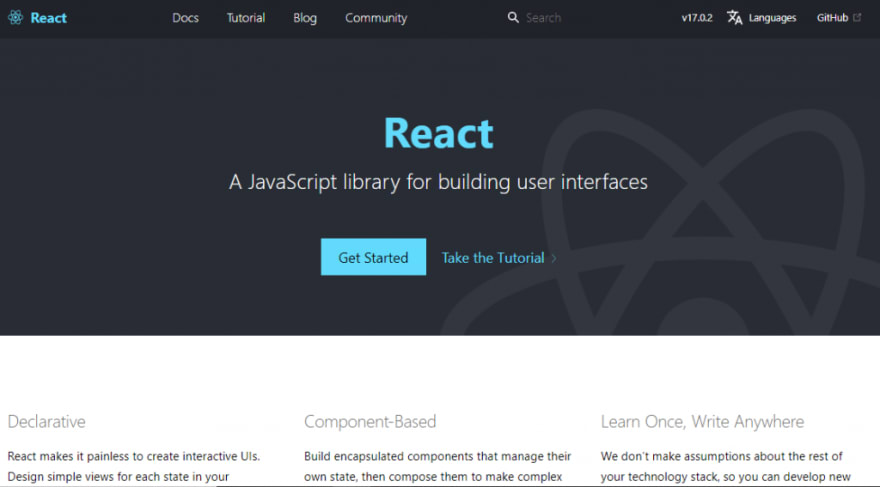
Although it’s more like a library, developers still consider React one of the best web development frameworks. Developed by Facebook, React was the first framework that adopted a component-based architecture. Vue and Angular later adopted the same architecture. Let’s take a look at what makes the framework popular among developers.
- JSX makes React not only easy to use but fun as well. Developers can write their code in JavaScript only. They can develop a new feature and see how it appears in real-time. In short, React directly brings HTML into your JavaScript.
- Components are what makes React unique. They allow you to break down complex UI. Instead of worrying about an intricate page design, you can break it down into smaller components and start developing the same.
- Virtual DOM helps React to know when to re-render and when to ignore certain pieces of the DOM. It increases the performance of the page. And since the UI reacts promptly to a user action, user experience enhances a lot.
- Due to the presence of many handy tools, the task of developers becomes easier. For example, React Development tools when used as Chrome extensions lets you inspect and debug the DOM easily.
- ReactJS is relatively new and primarily supported by Facebook. Hence the developer community, although rapidly growing, is still smaller in comparison to Angular.
- Constant updating of React technologies is kind of a disadvantage. It is because developers don’t get time to make any proper documentation.
- Since React covers only the UI, you will need to choose another framework for the backend.
- For new developers, JSX can be a barrier since it requires a learning curve.

Let’s discuss Angular’s advantages and disadvantages in detail.
- Since Google supports the framework, you can be sure that it is dependable, has some detailed documentation, and will keep up with the timely updates by Google.
- There are a lot of third-party integrations which you can add easily. Thus, allowing developers to improve the overall functionality of their website.
- Dependency injection of Angular is highly advantageous. Creating the dependencies can consume some time, but it’s worth it if you work on a large project where the site is expected to execute several functions.
- With an ahead-of-time compiler, Angular apps provide a faster loading time. TypeScript and HTML are compiled into JavaScript during development (before the browser loads your app).
- If you are a complete beginner, even with knowledge of HTML, JS, and CSS, the learning curve of Angular can be a little steep. This is because Angular is opinionated and brings its own rules into the table when developers start using it.
- Too many versions can confuse developers regarding which version to use and what extra features it offers. Also, like all other single-page web app frameworks, Angular has limited SEO capabilities.
- Even a simple app requires a lot of boilerplate code. Complexity during installation makes new developers prefer Vue or React rather than Angular.

Though Vue is a new framework, the Vue community is growing day by day. Vueis a progressive JS-based framework that you can use for building desktop and mobile apps along with web interfaces. Developed in 2013, Vue slowly ranked ahead of the other frameworks available in the market and currently ranked among the third web development frameworks.
- Speaking of popular features, the first that comes to our mind is the size. With a minified jQuery library, the compressed Vue weighs around 29KB. Being a small ecosystem, you don’t have to worry at all about performance.
- Because of its simplicity, programmers can quickly grasp it. The components are a combination of HTML and JavaScript; programmers experienced in these two languages can quickly develop large-scale templates.
- Vue extensive documentation makes it easier to learn. With limited resources, programmers can easily handle complex operations. Also, the components are interactive and reusable. With Vuex, you can easily share the states between components.
- Vue can easily handle 2-way data binding, thus making the code reactive. It’s better for single-page web apps since DOM changes accordingly whenever a code is changed. Thus, Vue is better for apps that require real-time updates.
- The framework is opinionated. You can design the structure of the app any way you want. Also, having native support for TypeScript allows developers to migrate their apps from Angular to Vue easily.
- Although the framework is flexible, when working on a large-scale project with multiple developers, flexibility can lead to complexity, leading to more errors which can eventually raise the cost of development.
- The community is still small, and it doesn’t have that much widespread support like Angular or React. And since the framework is evolving very fast, many tutorials that you will find might be outdated.

We have finally a contender ready to join the Big 3 – React, Vue and Angular. Svelte is another popular web development framework for developers due to its clear-to-read HTMLX templating and aesthetically pleasing appearance. But is it an appropriate framework for your project? Let’s find out the advantages and shortcomings.
- Just like Vue, the templates of Svelte are a superset of HTML. If you know HTML and CSS, the learning curve will seem to be relatively straightforward. The design philosophy of Svelte is similar to Python. There is an excellent tutorial with a real-time interface that helps developers quickly learn the framework.
- The language extensions of JS, CSS, and HTML are meant to improve the developer’s experience. The framework has become popular because of its small bundles and performance. For performance gains, the server-side rendering mode of Svelte concatenates components and compiles them in a string format.
- APIs are robust and good-looking. Starting from features to semantics, syntax, and installation size; everything is aesthetically pleasing.
- Virtual DOM often has certain downsides. The best feature of Svelte is that it optimizes code during compilation, thus propagating changes with a minimal overhead during runtime.
- Svelte is not plain HTML, JS and CSS. It has its language. Although it adheres closely to web standards, still adoption can be a bit risky. You will need specialized tools and more framework-specific knowledge.
- The architecture of compilers moves complexity from source code and run time to tools and build time. Although it appears like Svelte is eliminating complexity, in reality, the framework is just shifting complexity.
- The best practices of Svelte are still evolving. If you are working on a large project, Svelte is not for you since the framework is still in its youth and not mainstream ready.

The next front-end framework in our best web development frameworks list is Preact. It is another popular JS-based framework that states itself to be a 3KB faster alternative to React. Since it doesn’t occupy a larger chunk of your app, this means you don’t have to worry at all about performance. Since it’s based on the ES6 framework, it has seen significant adoption among the JS developer’s community. Let’s discuss the advantages and shortcomings of Preact.
- The significant advantage of Preact is the size. Less JavaScript means less execution time, enabling you to build a rich user experience without worrying about keeping a framework under control.
- Preact has a faster virtual DOM library. Developers have batch updates and have tuned the framework to its peak when it comes to performance. Preact developers even work closely with browser engineers to get the maximum performance from the framework.
- Apart from being lightweight, the framework is also fun to use. It uses standard HTML attributes and lets you be productive right from the beginning. Also, having a virtual DOM makes it easier to share reusable components like data providers and UI elements. You can seamlessly use the components that are available in the ecosystem of React.
- An important feature of React is synthetic event implementation. Unfortunately, that is not yet supported by Preact, and it relies instead on browser API. This can eventually cause performance and maintenance issues.
- There is no createClass. The framework supports only ES6 class-based components and stateless functional components.
- The developer community is still small. If you face any critical issue, it will take considerable time to get help from the community.

- You can quickly work with APIs provided by the framework.
- Ember is well known for processing similar tasks in one go. Thus, resulting in high performance.
- With Ember, you will get a complete front end stack. The framework comes with its router, services and asset pipeline.
- Routing is one of the best that you will get. URLs have route handlers enabled so that you can view conceivable states of applications. Also, asynchronous logic in the router determines promises.
- The philosophy of Ember is “convention over configuration”. The framework has everything readily configured for you so that you can start working on your project immediately.
- For a small project, although Ember JS is quite good, it can get complex for large projects. For example, Handlebar is not as efficient as JSX. If you want flexibility, JSX is a better option.
- The selling point of Angular and React is type checking. In Ember, type checking is yet to be improved, especially when it comes to the object model.
- Some work is yet to be done in the tree shaking as well. The ecosystem of React has better options when it comes to tree shaking.
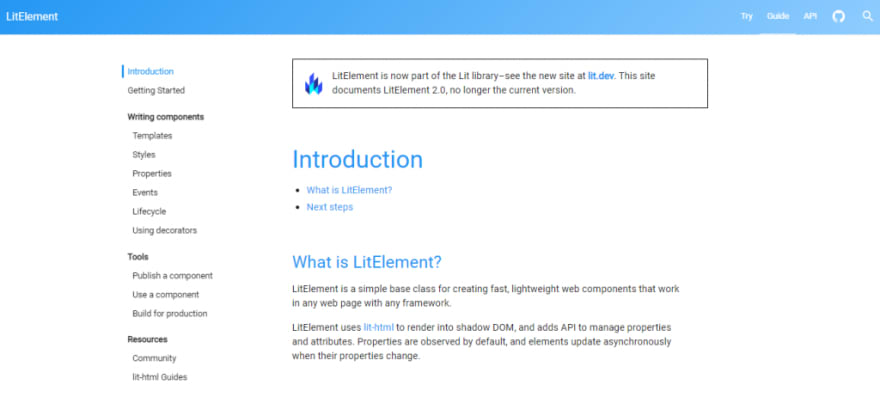
The LitElement framework is easy to use as a base class to create lightweight and faster web components for working with any framework. LitElement is yet another one of the top web development frameworks among developers for using lit-html for rendering into shadow DOM. It also adds API for managing attributes and properties. Let’s find out whether the framework is good enough for your project.
- The framework provides you with web components that you can easily define and share across your organization.
- You can use your components anywhere, in CMS, your main document or a framework like React or Vue. Custom elements can be included in the web pages.
- The framework uses lit-html for rendering templates. Since only dynamic parts of your UI are rendered, DOM updates are swift.
- Your components will work with your preferred framework since LitElement follows the standard of web components.
- You can declaratively express your UI. Since the framework allows you to use JavaScript, you don’t need to learn any new language for templating.
Although the community is growing slowly, the popularity is not as much as React or Angular. If you face some complications, you may have to wait for support from fellow developers.
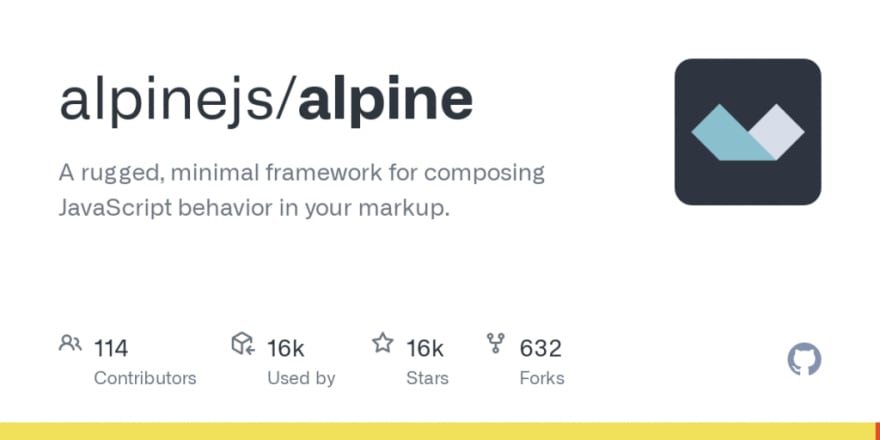
If you have a highly interactive SPA, we suggest you use Vue, React, or Angular. If you are working on a small project which only needs one or two components, it’s better to use AlpineJS. AlpineJS is considered among the top web development frameworks which is particularly for apps that are rendered server-side. Alpine is popular among developers as it leaves a minimal footprint of the app. Let’s find out the advantages and shortcomings.
- The most significant advantage of AlpineJS is the size. At the time of writing, with a size of about 4KB, the framework works great with your current frontend templates. It doesn’t matter what you are using. Be it Blade, HTML or anything else, Alpine can easily interact and help you to manipulate the DOM.
- You can efficiently manage the framework. Being developer-friendly, it allows you to focus on developing and less on configuration. Apart from web applications, you can also use them on Android or iOS.
- AlpineJS allows you to harness the declarative and reactive nature of frameworks like Vue, React or Angular at a lower cost.
- When something is changed in any non-interactive event, the DOM is not updated.
- Working with nested components or communication between them is a significant limitation.
Now, let’s discuss the top back-end frameworks. We have compiled the list from the popular frameworks according to the State Of JS 2020 Survey. Until there is a significant change in usage, these frameworks will retain their popularity in 2021.

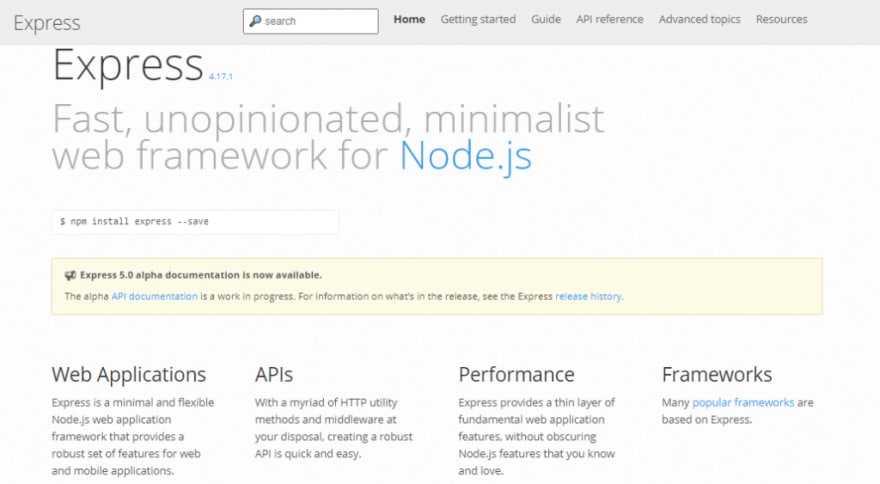
JavaScript has unlimited usage scope. In other words, it’s not a problem nowadays to build an entire website using JS. Thanks to the popularity of NodeJS, ExpressJS is currently among the popular web development frameworks for web development. Being fast, minimal, and unopinionated, Express provides some core features of a framework by leveraging the robustness of Node. Let’s take a look at its benefits and drawbacks.
- If a developer is comfortable with NodeJS for the back end, they will become more comfortable with Express’s improved and advanced process.
- You can define the routes of a preexisting app with the help of URL and HTTP.
- Static files and resources are easy to serve.
- A very advanced feature is the creation of a REST API server.
- You can connect with MongoDB, Redis as well as MySQL.
- You can easily customize and configure the framework as per user requirements.
- When used with NodeJS, both frameworks can support multiple concurrent actions.
- With an open-sourced community, the code constantly gets reviewed and improved. And whenever you are stuck, you will get some help from the other community users.
- When a developer is migrating from any other programming language, the event-driven nature of Express JS can be a little complex to comprehend.
- If you are planning to develop a mobile app with Express JS, you have to get familiar with the concept of middleware.
- The framework is perfect for medium and minor projects. If you aim to create a large project, a middleware framework like ExpressJS should not be your choice.

- It has built-in CSS support. Developers can easily import CSS files from JS.
- With the next/image component, developers can automatically optimize images.
- Because of its growing popularity, Next.js has several contributors. Thus, instead of solving an issue from scratch, you will get a solution from the community whenever you face any issue.
- Developers can update existing pages by just re-rendering them in the background. Thus, static content gets converted to dynamic.
- Automatic TypeScript compilation makes Angular development easier.
- The main focus of Next.js is to focus on business login. And since it provides an automatic bundling and compilation experience, projects are ready for production right at the beginning.
- Since the framework is not that front-end friendly, you have to develop the entire UI layer from scratch.
- Next does not have a built-in state manager. If you need one, you have to use Redux or a similar library.
- Compared to Gatsby, there are not that many plugins that you can adapt quickly.
- You will need a dedicated person to handle the development and management if you don’t have an in-house team.
- The usage of Next is limited to its file-based router. If you want to use dynamic routes, you have to depend on a Node server.

- If you are using Gatsby for development, it means you are getting all the features of the most preferred front-end libraries like React. You will get the scope of developing a fully customized user experience.
- Since Gatsby is a static site generator, it doesn’t connect with the database or sensitive information. Hence, you don’t need to worry about security.
- The framework is built with performance as the top priority. Gatsby sites are a lot faster than other sites. All you need to do is create a source, and Gatsby.js will compile the webpack configuration to build your site. The framework follows a PRPL architectural pattern developed by Google that aims to increase your site’s performance.
- The framework also allows you to use Gatsby Cloud to build, preview, and deploy your code hosted on a global edge network.
- The learner curve is a bit steep. Since the framework is a blend of GraphQL and React, you will need to know both. However, this, in turn, broadens your knowledge base as a developer.
- If you have large content and regularly update your site, Gatsby is not for you. It will increase the time to publish content. For example, if you have a magazine type of blog, generating a static website and publishing it can take a lot of time.
- If you plan to develop a client-side web app like Twitter, Gatsby should not be the choice since it’s mostly suited for blogs, presentation sites, or e-commerce sites.

Are you thinking about using Vue to make your next front-end application? Are you confused about what to use as a backend? Go for Nuxt, an open-source framework aimed at making web development powerful and simple. Let’s take a look at why Nuxt ranks among the most popular web development frameworks.
- Nuxt is well known for the friendly experience it provides to developers. The team behind Nuxt constantly works to improve it. You will get descriptive error messages, detailed documentation, and powerful defaults. If you have any queries or issues, the community is highly supportive and always ready to help you.
- The architecture of Nuxt is modular. To make your development faster and easier, you can choose from more than 50 modules. You can also add Google analytics, generate a sitemap or get the benefits of a progressive web app easily.
- You will get an out-of-the-box optimization experience with Nuxt. By utilizing the best practices of Node and Vue, developers have created a performant framework. What’s better? You will get a bundle analyzer and lots of other tools to fine-tune your web app.
- Using custom libraries can be challenging, especially if you have a short timeline.
- Heavy traffic can create a load on the server.
- Unlike other web development frameworks, Nuxt can be challenging to debug. This is an issue that many developers frequently report. Developers often don’t know where to start to track the root cause of an issue.
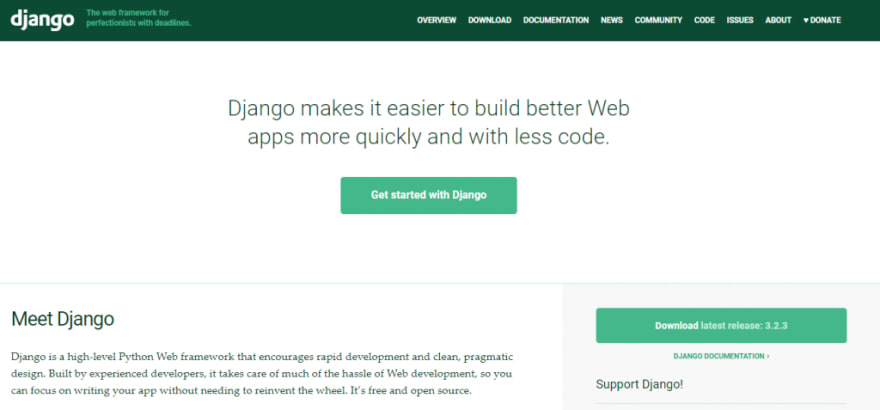
Django offers techniques and tools to developers to help them build a secure website, or it incorporates security in the framework itself, such as blocking code execution in the template layer. Besides, Django has many powerful features, which makes it different from other web development frameworks for the back-end. Let’s take a look at Django’s popularity and shortcomings.
- Django is the best at documentation since its inception, and its documentation has only improved drastically with current tech innovation, and it is also available in multiple languages.
- Django controls the website via URLs instead of IP addresses on the server, making it simple for SEO executives to connect the website to the server while avoiding the need for the web developer to translate the URL into any numeric code.
- There is no need for prior experience of the backend to build a fully functional website. It runs multiple files simultaneously without requiring the development of separate server files for database design.
- It provides flexibility by pluggable apps, through which third-party applications can be quickly plugged.
- Django provides high security by default, closing loopholes previously left open for the backend developer to complete.
- Django is not supported for highly scalable applications.
- Django has a steep learning curve. Though it is a simple and easy framework, it is coded in Python, making it difficult to learn.
- Unlike other web development frameworks, Django cannot handle multiple requests at the same time.
- The Django framework is monolithic. It has a limited number of dependencies, which makes it difficult to use.

Designed by the team who developed Express, Koa aims to be more expressive, smaller and provide a robust foundation for your API and web apps. Using asynchronous functions, Koa allows developers to ditch callbacks and efficiently handle errors. Apart from being free from any middleware, let’s take a look at why Koa is among the list of popular web development frameworks.
- The biggest advantage of Koa is the use of generators. Generators can clean up all the mess in your code caused by callbacks. Thus, making your code manageable.
- The development team has a proven track record since they were the one behind the most widely used ExpressJS.
- The framework is extremely lightweight, with just 550 lines of code.
- The team is currently shifting towards the async/await style of programming. It has a vast advantage over generators.
- The community is relatively small. You have to wait a lot for support from fellow developers in case you face any critical issue.
- Generators, although used, are not compatible with any other type of middleware based on NodeJS. If you are looking for customization, go for Koa, but if you want to use templates and routing, Express should be your choice.
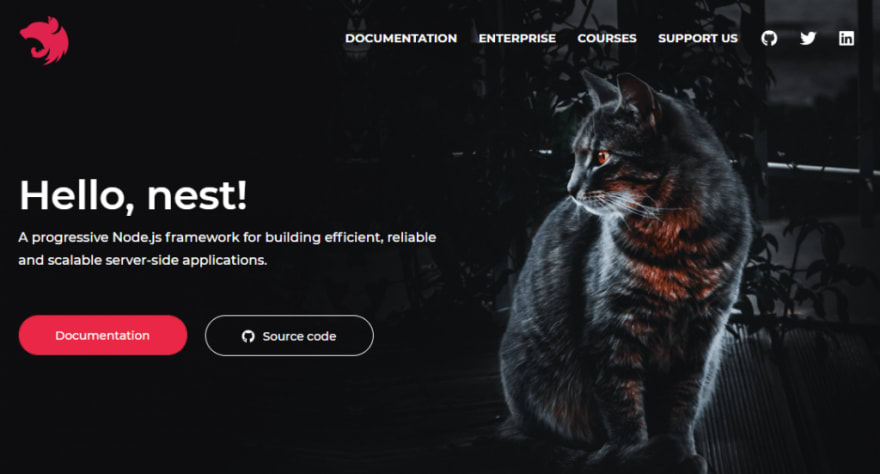
- Thanks to the modular architecture, Nest is quite flexible. You can use any other front end library with Nest.
- The ecosystem of Nest is quite adaptable. It has a backbone where you can develop all kinds of scalable server-side applications.
- With the help of the latest features of JavaScript, Nest allows you to bring mature solutions and design patterns to the world of NodeJS.
- You will get to use controllers and services in Nest. The controllers always return a promise. So, Nest can easily catch an exception in case of any errors and throw the appropriate response.
- Like Angular, Nest also uses a Dependency injection system. So, you only have to import the user module in the app module, and the controller will do the rest.
- Since Nest uses TypeScript, there will be a lot of boilerplate code. You will often get a feeling like you are doing repetitive tasks.
- Nest works well with the middleware of Express. However, suppose you want to add middleware to selected endpoints and exclude a few. In that case, you need to do it manually by checking inside the middleware whether the requested URL matches the endpoint that you need to exclude.

- If you are a beginner in JS, Meteor is great to start your learning curve. Meteor offers you clear documentation apart from having well-established conventions for programming.
- Since the foundation is represented by jQuery, you will have a lot of libraries and packages. You can even use third party packages. Atmosphere.js represents a complete set of packages that are compatible with meteor. All of these packages are reliable and high-in-demand among developers who are working with Meteor.
- There are a lot of tools for debugging Meteor based apps. Using tools like Webstorm, you can manage subscriptions, modify documents as well as remove collections. The framework also supports server-side debugging.
- Meteor has an in-built testing tool called Velocity. The tool can integrate with Jasmine or Mocha syntax. As soon as you save your code, testing begins, and errors are promptly displayed.
- The development process consumes a bit of time. It is because reactive joins are absent. If you want to choose and join data from various collections, you have to invoke packages.
- The developer does not have any control over the order of file loading. Hence, file organization is complex sometimes.
- Server-side deployment is time-consuming and complicated when compared to Angular.

Developed originally by members of WalmatLabs to handle the Black Friday sales, Hapi is a framework rich in features. One of the main reasons for being in the web development frameworks list is that the Hapi framework favors configuration over code. It tries to cover many out of the box use cases. Let’s take a look at its advantages and disadvantages.
- Hapi gives you a robust plugin system where you can quickly and easily add new features.
- You can build scalable APIs and fix bugs quickly.
- For building REST APIs, this framework is a great choice since it gives you the ability to do routing, caching, and I/O validation.
- You can use it with any front end framework like Vue, Angular or React to create SPAs.
- The support for document generation along with the detailed API reference is beyond comparison.
- You will get in-depth control over request handling.
- Hapi is intended to be used in large projects and teams. If your project is small, the framework can be a little heavier on the boilerplate.
- Developers need to figure out the structure of the code.
- Automated refactoring is absent. Also, developers must create and test endpoints manually.
- Developers are locked into using modules that are specific to Hapi only, like tv, good, boom, catbox.
So, we’ve compiled a list of the 17 best web development frameworks, along with their pros and cons. Choosing a specific framework depends on the nature of your project. If you are developing a WordPress-based site, Gatsby is useful. If you are developing a site using Vue, Nuxt should be your choice. But if your project is large and long-term, it’s better to use a combination of Angular/Vue or React along with Express or Next as a backend.
Once you implement the framework, you need a tool to test how your website and web apps render on multiple devices. LambdaTest is a cross browser testing tool that will cater to all web testing needs with amazing features like cross browser testing, automation testing, visual regression testing, responsive testing and geolocation testing.
You can even use LT Browser – a developer-friendly desktop browser equipped with out of the box features that lets you test websites and web apps for responsiveness across 50+ pre-built device viewports like mobile, tablets, desktops, and laptops.



We hope you find our list of the best web development frameworks to be helpful. Let us know in case you have come across any other framework that you feel deserves mention in the list.
17
